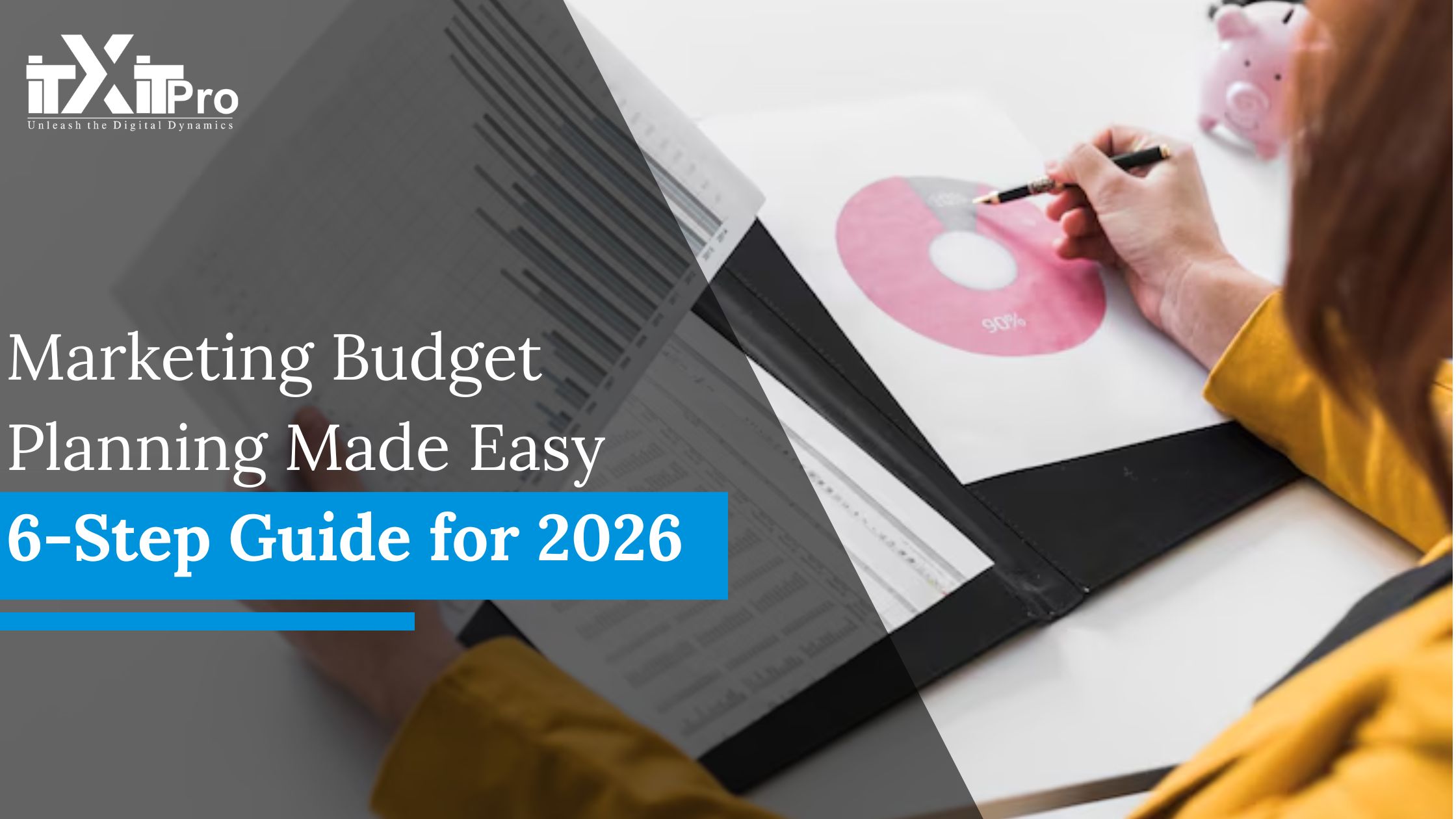
A marketing budget planning is not just an expense—it’s an investment in your brand’s growth. If you don’t have a budget set prior to your marketing investment, your business could overspend, underspend, or misallocate its marketing resources. This all results in ineffective marketing campaigns or missing opportunities. A well-defined marketing budget will allow you to invest marketing money into the most productive marketing channels for your business, which will increase lead generation, customer acquisition, and brand awareness.
1. Define Your Marketing Goals
Before you can set a budget, you need to understand your business goals. Do you want to increase brand awareness, website traffic, leads, or improved retention? A marketing budget plan and setting SMART (Specific, Measurable, Attainable, Relevant, and Time-Based) defined goals will help set your process to meaningfully allocate features and marketing resources. Your company goals and marketing goals are one and should correspond with your overall business strategy to spend every marketing dollar towards growth and consistency.
2. Analyze Past Performance and Industry Trends
Utilising data is a requirement for a successful marketing budget. By evaluating previous results, one can identify what worked and where to best improve. By studying key performance indicators (KPIs), organisations can use their resources more effectively.
Here are a few important KPIs to evaluate:
Customer Acquisition Cost (CAC): Knowing how much an organization spends to obtain a new customer can lead to an improved allocation of resources in order to spend more efficiently.
Return on Investment (ROI): Evaluating previous campaigns is a good way of understanding what is the most profitable to fund in the future.
Conversion Rate: Knowing how well the campaign converts actions into sales (or the desired action that was defined in the goals) is a good indicator of campaign performance.
Cost Per Lead (CPL): Knowing how much you are spending to generate one lead can aid in future evaluations for resource allocation.
Website Traffic and Engagement Metrics: Knowing how users are engaging with the website, e.g., bounce rate, average session duration, pages per visit, may improve digital marketing campaigns.
Continuously keeping up-to-date with industry trends and competitor tactics is also key. Changes in the market, technology, and consumer behaviours can affect marketing performance. Conduct competitive analysis by observing competitors’ digital footprints, advertising approaches, and content engagement. Identifying new opportunities, such as new, emerging social media platforms or AI-enabled marketing tools, may also be an important factor in staying competitive.
By combining internal performance analysis with external industry knowledge, businesses can make more educated decisions about budget allocations and remain relevant and effective with their marketing efforts.
3. Identify Key Marketing Channels and Strategies
Your budget should be allocated across winning channels. For example, digital marketing strategies:
Search Engine Optimisation (SEO): Building organic visibility for sustainable traffic over time.
Pay-Per-Click Advertising (PPC): Generating highly targeted traffic, with responses in nearly real time.
Content Marketing: Using valuable content to attract, inform, and engage your audience.
Social Media Marketing: Engaging your audience across platforms like Facebook, LinkedIn, Instagram, and Twitter with the help of social media marketing.
Email Marketing: Continue to develop leads and retain customers with personalised messaging.
Influencer and Affiliate Marketing: Expanding your reach by working with influencers in your industry.
For a few businesses, traditional marketing channels like print, TV or radio could be relevant. Choose a mix that fits your target audience and meets your business needs.
Choosing the Right Mix of Marketing Channels
When selecting the right marketing mix, consider factors such as:
- Audience Preferences: Where does your target audience spend their time?
- Industry Benchmarks: What channels are most effective in your industry?
- Cost Efficiency: Which channels provide the best return on investment for your budget?
- Scalability: Can the selected channel scale with your business growth?
A combination of inbound marketing (SEO, content, email) and outbound marketing (PPC, social media ads, traditional media) ensures a well-rounded approach that maximizes reach and engagement.
4. Allocate Your Budget Strategically
Once you’ve identified your key marketing channels, distribute your budget wisely. A common approach is the 70-20-10 rule:
- 70% for proven strategies that consistently deliver results (SEO, PPC, social media ads, etc.).
- 20% for new growth opportunities (expanding to new platforms, influencer collaborations, etc.).
- 10% for experimentation and testing innovative ideas (emerging trends, AI-driven marketing, etc.).
This structured allocation ensures you invest in strategies that drive sustainable growth while leaving room for innovation.
5. Monitor Performance and Adjust in Real-Time
Marketing trends evolve, and consumer behaviour can shift unexpectedly. It’s crucial to continuously monitor your budget and adjust spending based on performance data. Utilise analytics tools such as Google Analytics, Facebook Insights, and CRM software to track:
- Engagement and reach
- Conversion rates
- Cost per acquisition
- Customer lifetime value (CLV)
Regularly reviewing these metrics will help you reallocate resources to the most effective campaigns, ensuring you maximise your ROI.
6. Justify Your Budget to Stakeholders
When showing your budget to decision-makers, bring clear numbers and input back for the expected return. Show how you successfully executed initiatives in the past and how each investment ties to business goals. The better your data backs up the budget, the better chance it has of getting approved and allocating the required funding to drive growth. Budgeting Mistakes to Avoid When Marketing
Even with a well-thought-out plan, a business sometimes makes budgeting mistakes on its way to getting more customers. These are mistakes you should avoid:
Underestimating your costs: Many hidden expenses can arise, ultimately taking your budget short when committed to it. Be sure to factor in any unexpected costs by building them into your budget.
Relying on a specific channel: You don’t ever want to rely on a platform marketing strategy. Spreading the marketing would lower your dependency on any one platform.
Analytic factors: Not tracking your initiatives (or lack of time in tracking) leads you to waste money by spending on initiatives that weren’t working for you or may have assumed they were working through hopeful guessing.
No flexibility: A budget that can not provide flexibility can keep the business from overcoming trends that just opened up for new opportunities.
Final Thoughts
A well-structured marketing budget ensures that every dollar spent contributes to your business growth. By following these six steps, you can create a dynamic, results-driven budget that adapts to market trends and delivers measurable success in 2026. Strategic planning, continuous monitoring, and flexibility will position your business for sustainable growth and competitive advantage.
FAQs
1. What is a marketing budget?
A marketing budget outlines the estimated costs associated with marketing activities, including advertising, branding, content creation, and digital campaigns.
2. Why is marketing budget planning important?
Proper budget planning helps allocate resources efficiently, track ROI, and ensure marketing efforts align with business goals without overspending.
3. How much should a business allocate to its marketing budget?
The recommended budget varies by industry and business size. Generally, companies allocate 5-10% of revenue for marketing, with higher budgets for growth-focused businesses.
4. What are the key components of a marketing budget?
A marketing budget typically includes expenses for SEO, PPC advertising, social media, content marketing, email campaigns, influencer partnerships, and marketing tools/software.
5. How can businesses optimize their marketing budget?
Businesses can optimize their budget by focusing on high-ROI channels, tracking performance through analytics, leveraging automation, and continuously adjusting strategies based on data insights.
6. What’s the difference between a fixed and flexible marketing budget?
A fixed budget remains constant throughout the period, while a flexible budget adjusts based on performance metrics, market trends, or unexpected opportunities.
7. How do you measure the effectiveness of a marketing budget?
Effectiveness is measured through key performance indicators (KPIs) such as ROI, customer acquisition cost (CAC), conversion rates, and lead generation metrics.
8. Should businesses prioritize digital marketing over traditional marketing?
Digital marketing offers better tracking, targeting, and cost-efficiency, but the ideal strategy depends on business goals and target audience preferences. A mix of both is often beneficial.
9. How can small businesses manage a limited marketing budget?
Small businesses can maximize their budget by focusing on organic marketing (SEO, social media), repurposing content, leveraging free tools, and running cost-effective paid ads.
10. How often should businesses review their marketing budget?
A marketing budget should be reviewed quarterly or annually to ensure alignment with business goals and adapt to market changes.















